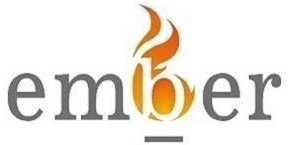Ethiopian Healing Scroll
$1,500.00
Description
19th century AD. A vellum scroll consisting of three strips with magical prayers written in Ge'ez, an archaic liturgical language only known to clerics, in black and red ink, comprising: a prayer against illnesses of suckling babies; a prayer against Shotälay; a prayer to undo magical machination; possibly St George; a guardian angel; with the owners name 'Wällättä Abib'. 91 grams, 10.2 x 185cm (4 x 74"). From the private collection of David Buxton (1910-2003), author of 'Travels in Ethiopia', 1949; accompanied by a copy of a collection catalogue and information page. The magic scrolls of Ethiopia use the power of images viewed by a sick person to heal himself. Their preparation by dabataras, who are unordained clerics commissioned by the patient, and their employment within Christian families has continued into the second half of the present century. Dabataras are skilled in diagnosing the causes of illnesses or psychological complaints and in treating them through the powerful images and prayers set out on the scrolls, combined often with traditional medical remedies. The talismans and prayers act on the spiritual cause of the sickness and the plant and animal medicines on their symptoms (e.g. skin ailments"). The scrolls are often protective rather than merely curative and for this purpose the animal skins on which they are written are sewn together to cover the length of the body, so as to provide overall protection. The scrolls are often also used by sons and daughters and later descendants. The prayers and texts are Christian, with the demonology being associated principally with the Old Testament (e.g. the Book of Enoch), going back for instance to the secret names of God, to Gog and Magog, and to the talismans for exorcising devils from those possessed which were know only to celestial beings. King Solomon and his beheading of the Demon- blacksmith King plays a leading role, with the Net of Solomon being a prayer which is frequently cited (Solomon catches the demons like fish in a net); but Alexander the Great has also been transposed into a Christian King who commands demons to disappear, having himself ascended to Paradise on a winged and feather-tailed horse. The Saints of the Ethiopian Orthodox Church also appear: for instance, the Hermit Saint Manfus Qeddus is an exorcist of leprosy. Christian imagery and prayers predominate, with the Rampart of the Cross, a composite of prayers relating to the crucifixion and the Cross being a very common text. Elements of Zar cults merged with Bible stories are frequently present.
